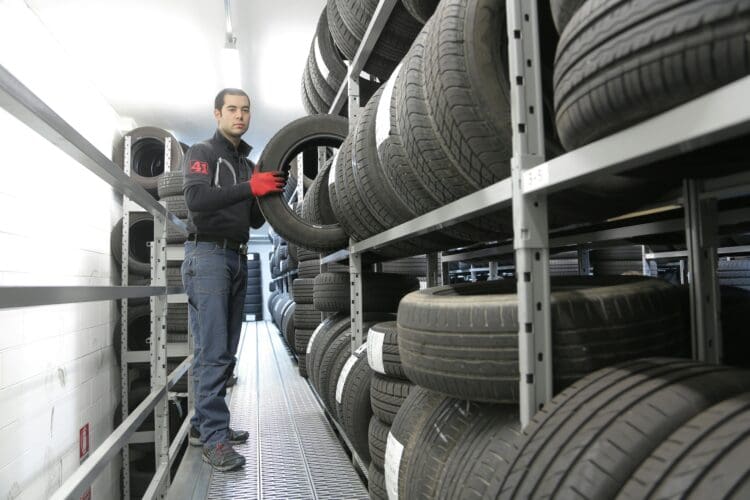
How old is too old for tires?
Tires play a critical role in vehicle safety. If you take care of them, they can safely last you up to six or even ten years. Generally, using tires that are older than this timeframe can pose some significant risks as worn or aged tires can increase the risk of car accidents.
However, although most tire manufacturers recommend replacing your tires every six to ten years, certain factors can affect tires and make them more unreliable even if you haven’t reached their lifespan.
Therefore, it is important to check your tires regularly to ensure that they are in optimal condition. Personal injury lawyers can provide valuable assistance for car accident victims[a] especially if the circumstances surrounding the unfortunate event are related to mechanical failures or other causes. Speak with a lawyer to learn more and let them help you understand your legal options and pursue just compensation. Here is what you should know about car tires:
General Lifespan of Tires and DOT Code
The general lifespan of tires, whether they are car, motorcycle, or truck tires, can vary depending on what type of tire it is and the driving conditions it is subjected to. Generally, most tires should last between six to ten years regardless of tread wear.
To understand the exact age of your tires you should check its DOT code. This code indicates the manufacturing date. The last four digits of the DOT code inscribed on the tire represent the week and year of manufacturing. For example, if the code ends in 2324 it means that the tire was made in the 23rd week of 2024.
If you are unable to find a DOT code on your tires then it most likely means that it does not adhere to all U.S. requirements. Such tires might be dangerous as they were not tested or confirmed to meet the U.S. Federal Vehicle Safety Standards (FMVSS).
Missing DOT numbers can mean that the tires were never meant to be sold in the U.S. or they are no longer safe to use so you should replace them immediately. If you were involved in a car accident and your tires were affected, you should also replace them to ensure your safety. In some cases, you might be able to repair the tires but that only depends on the amount of damage they were subjected to and if a thorough inspection can determine its safety.
Signs of Aging and Need for Replacement
Regardless if your tires have met the six or ten-year mark, you should check them and care for them often. If they have any of the following aging signs, change your tires right away to ensure safety:
– No grip
Tires that don’t grip should be changed immediately. The grip is determined by the amount of contact your tire has with the ground. If the grip is not strong then it means that your tire’s tread depth is most likely below 3mm, which is dangerous. Tread depth issues are often caused by wear and tear over time and other factors.
Bulges or blisters
Damaged tires often display various signs. One common sign is the presence of bulges or blisters on the outer surface. Such tires should be replaced as soon as possible as they can lead to tire blowouts.
Brittleness
Tires that are not flexible and feel hard might also be past their prime and should be replaced.
Car shaking
Your car might shake when you drive on bumpy roads but if the vibration persists even on well-maintained roads, then the issue might be traced back to your tires. Unbalanced or misaligned tires could be the issue or your car’s shock absorbers.
Structural components showing
A tire has various types of materials inside it to help maintain its shape and reinforce its strength. However, sometimes fabric cords or steel might show up. This is now a good sign as these structural components shouldn’t stand out.
The presence of cracks
Rubber dries out with age and if you witness cracks between the tread blocks it might be time to replace the tires. Fine lines are normal but if the cracks are wide to the point where you can peel bits of the rubber off, then it is definitely time to make a change.
Expiration date
As previously mentioned tires have DOT numbers which also indicate the expiration date. For most tires, this term is usually six years from the manufacturing date. Check the date to find out the age of your tires.
Environmental Factors
Although tires have an expiration date, that does not mean that certain environmental factors will not affect aging and lead to premature replacement. Tires can age faster in extreme temperatures. Both hot and cold climates will negatively impact your tires.
In many instances, high exposure to sunlight, ozone, and other harsh chemicals combined with water can also accelerate deterioration.
The Risk of Accidents Due to Worn or Aged Tires
Worn or aged tires present a significant safety risk and often play a crucial role in many vehicle accidents. To prevent such risks vehicle owners should regularly inspect their tires and keep them in optimal working conditions. Here are some of the risks associated with worn or aged tires:
Reduced Traction
Tires lose their tread over time and will affect grip on wet or slippery surfaces. Insufficient tread can lead to hydroplaning. It will make drivers face increased difficulty when steering or performing stops effectively.
Worn tires are also unreliable during sudden maneuvers as again, the grip is weak. Losing control of your vehicle can occur at any point while operating a vehicle with worn or aged tires.
Increased Stopping Distance
Tires with worn treads are ineffective during stops. You will need longer braking times to come to a complete stop. This extended stopping distance can be devastating in emergencies especially if you have to perform a sudden stop or other maneuvers.
Higher Risk of Blowouts
When tires age, their internal structure weakens and this can lead to a higher risk of blowouts. A sudden tire blowout can be fatal during high speeds as it will make you lose control of the vehicle.
Drivers must also keep in mind that exposure to heat, UV rays, and chemicals on the street will accelerate tire degradation. This will increase the likelihood of blowouts which is why keeping your tires in optimal conditions and inspecting them often is necessary.
Poor Performance in Adverse Weather
If you use worn tires in adverse weather conditions, you take several unnecessary risks. For example, if it rains, you will more easily lose traction and hydroplane. If it’s snowing, you will struggle to keep the necessary grip to drive safely.
Aged tires are also more susceptible to temperature changes than new tires. Worn-out/aged tires are more susceptible to blowouts, and they perform poorly in extreme weather conditions.
Neglected Maintenance & Liability
Tire maintenance is sometimes overlooked by drivers. You should regularly check tread depth and age to ensure reliability and safety. Neglecting maintenance can lead to various dangerous situations on the road.
Worn tires can lose air pressure more quickly, for example, leading to underinflation which further increases the risk of car accidents. In many situations, if you get involved in a car accident, you can increase your degree of fault and pay for more damages if it can be proved that you failed to maintain your vehicle safe.
Keeping your tires in optimal condition should not be a hassle. For example, you can check your tires while you are doing your fill-up or washing your car. If anything unusual shows up, inspect them deeper and visit a maintenance center to solve any possible issues.
Tire Maintenance Tips
There are several ways in which you can preserve your tires and ensure they are in optimal working conditions. Here are some things to consider:
Tire rotation
Every time you do an oil change or reach 5,000 to 7,000 miles, you should do a tire rotation. Switching tires with one another and placing them in different locations can help you even tire tread wear.
Air pressure
You should do a monthly air pressure check on your tires to enhance your vehicle’s fuel efficiency, avoid tire blowouts, and ensure the lifespan of your tires.
Tread depth
Regularly check the tread depth. You can use a quarter and insert it into your lowest tread. If you can see the entirety of the president’s head then your tire tread is most likely at or below 4/32”. This means that you should replace your tires soon.
Flat tires
When you get a flat tire, you must ensure that it is repaired by a proper auto maintenance provider. Not all flat tires can be safely repaired. A true technician will help you determine whether you need repair or replacement. A poorly repaired flat tire can pose more risks in the future and contribute to accidents. Since flat tires can occur anytime, it is essential to also regularly check your spare tire and ensure it is in proper working condition.
The post How old is too old for tires? appeared first on My Car Heaven.

